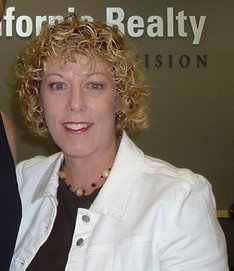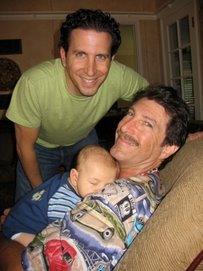Keep the Home You Buy in 4 Steps
You may have been in a situation where you’ve qualified for a home loan, closed escrow, started making mortgage payments and several months later had a problem making your next payment. You’re not alone. Many homeowners have faced the same problem due to buying more than they could afford, but qualifying for the loan regardless.
Now that you’ve put out all your money for the down payment, re-painting, minor remodeling and some new furniture you’re afraid you may be loosing the house. This situation is far more common that you might imagine. According to Morgan Stanley, the default rate for homeowners who are 90 days late on their mortgage payments almost doubled from 7% in 2003 to 13% in 2006. How can these situations be avoided? The following 4 steps will help you to keep the home you purchased if you run into a financial bind. In addition, you’ll see if you need to change your standard of living, you’ll be prepared for emergency expenses, without creating a financial disaster, and you will ultimately be able to choice to work instead of have to work.
Step1. Create a long-term financial goal.
I call this deciding from the big picture instead of the details. Many times we are confronted with difficult choices: Should I buy this sweater in red or blue? Red or blue? Red or blue? The difficulty arises because this is the wrong question. It’s based on a detail and not a big picture, or long term objective. Some better questions would be: Do I need another sweater? If I didn’t have to work for a living, would I buy this sweater? What is the purpose I desire to fulfill by buying this sweater? Is the purchase of this sweater in alignment with my long-term goals?
Creating a long-term goal allows you to answer the last question I posed. If your objective is to save up and buy new furniture for cash, take a world-class vacation in three years, or retire in 15 or 20 years, then you can see if buying that sweater is in alignment with producing your long term goal or goals.
Step 2. Find out what your current financial picture looks like.
This is done with two or three forms. The first is a list of what you own (assets) and what you owe (liabilities) called a balance sheet. When you subtract what you owe from what you own, your net worth is the amount left over, provided this is a positive number. A negative amount would require more immediate attention. Make believe you were on your way to a new home of a friend, and got lost along the way. When you called your friend for directions, what would be their first question? “Where are you?” Correct? What a balance sheet does is tell you where you are financially at one moment in time. Just like you can’t get to your friend’s home without starting with where you are at the moment, you can’t create financial results if you don’t know from where you’re starting.
The second form is a cash flow form, or a listing of your income and expenses. Put how much money you earn each month on the left, and where you spend it each month on the right. Don’t forget to add in the items which don’t show up each month like car registration fees or maintenance and repairs, property taxes, fire insurance, back to school or special event clothing, holiday gifts, vacations and so on. Look over your checkbook register or credit card statements for the last twelve months to be reminded of what happened. I guarantee something like those items will occur in the future, and the money ought to be set aside now for them. For most families, this is generally 10% of their monthly income.
The third form depends on whether or not you have credit card debt. Only about one-third of the people with credit cards can pay off their balances in full each month. For the other two-thirds of the credit card population, (Which is about 80 million people!) create a list of all of the cards, the outstanding balances, monthly payments and interest rates. Look at these payments as a level amount. By setting aside 10% of your income to pay for the non-monthly expenses shown on the cash flow form, you can end the increasing credit card balances and over time pay them off in full. Also, look to see if you can transfer balances to lower rate cards. I recommend you learn how to handle money effectively. I do not recommend you refinance your home to pay off credit cards. Don’t secure your home for debts that are otherwise unsecured. Any quick and easy method to eliminate credit card debt is a wasteful solution. It’s like getting lipo-suction without changing your eating or lack-of-exercise habits.
Step 3. Track your spending to see if it’s in alignment with your long term goals.
Obviously, you can’t do this unless you’ve created a long-term financial goal from Step 1. Every millionaire I’ve met or read about knew in detail how much money was coming in, and where it was being spent. They were conscious of the flow of their money. After all, the money was created by trading the energy of their life for money. You’re doing the same thing, trading your life energy for money. Are you spending your life energy and feeling satisfied?
Use a blank check book register, rather than a random list like a spiral notepad, and create categories for the expenses that occur all month long. Include the unexpected ones. There is no need to track your mortgage payments because it is usually only once per month, and the same for the car payment. Track items like groceries, meals out, entertainment, clothing purchases, hobbies and so on. Millionaires do this to create wealth and to maintain wealth. If it’s good enough for them then it ought to be good enough for regular folks too. Right?
Step 4. Pay yourself first.
There’s something else millionaires do that we can all learn from. Besides paying themselves first by setting up an account with money to spend later (as I explained in the paragraph about the cash flow form in Step 2), pay yourself first money you will keep forever. Set aside 10%, or more, of every check you receive. This is the money you can invest so that at some point in the future work can become a choice, instead of a requirement. Some people retire and other people work at what they always wanted to do. Contribute the maximum to your 401(k) plan at work, or put money into an IRA, or buy stocks, mutual funds, or more real estate. If you set aside 10% of your income and earned 12% on your invested money, in 30 years you could have a portfolio which would generate annually three times more passive income than what you earned from your work.
With these four steps in place, you will see what it takes to meet your mortgage payments and maintain your standard of living, or change it if you need to. You will be prepared for emergency expenses, without creating a financial disaster, and you will ultimately be able to choice to work instead of have to work.
Send comments or questions to rennie@GabrielBooks.com
Tuesday, February 20, 2007
Subscribe to:
Post Comments (Atom)



No comments:
Post a Comment